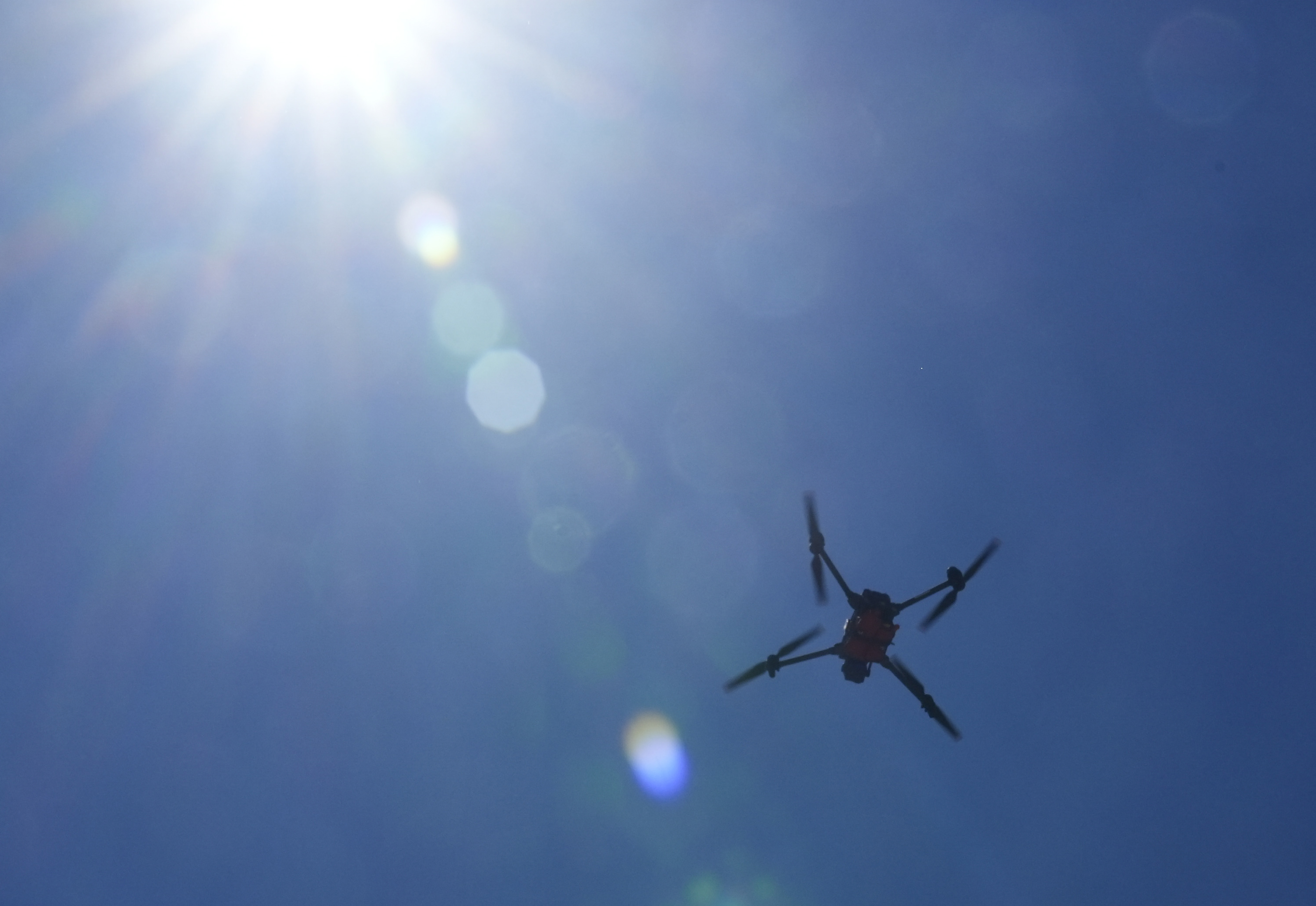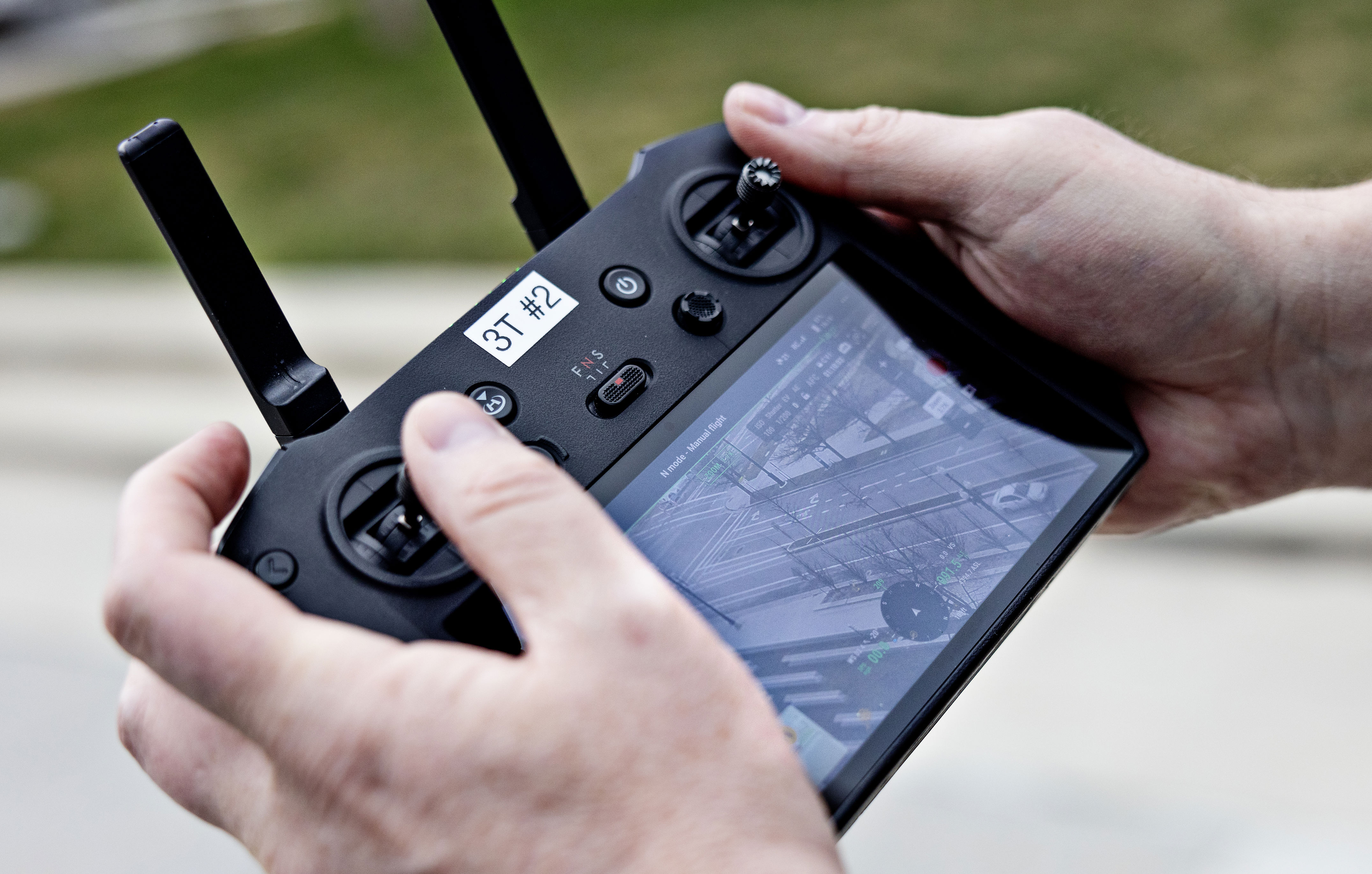Police across the country are embracing a new first responder: Drones

In dozens of U.S. cities, the next time you call 911, a drone might arrive before an officer does.
The technology behind that—"Drone as First Responder," or DFR—has skyrocketed in popularity among police departments nationwide since the Federal Aviation Administration streamlined the process for agencies to adopt the program this spring. While it could previously take up to a year to get approval, it now often takes just days.
Law enforcement and drone industry leaders praise the technology as lifesaving, with the potential to help authorities in situations ranging from missing persons cases to active shooter incidents. But critics worry the programs encourage mass surveillance and violate the public's privacy.
"When you have a camera in the sky that can see things that police officers cannot normally see, that offers a huge potential for privacy invasion," said Beryl Lipton, a senior researcher with the Electronic Frontier Foundation, a digital rights group.
DFRs serve as an "eye in the sky," police say Streaming footage to officers before they enter a potentially dangerous situation. One of the hardest aspects of policing is that in calls for service, "we don't have crystal balls, we don't know what we're going into," said Roxana Kennedy, chief of the police department in Chula Vista, California.
There is no public list of law enforcement agencies that have adopted the programs, and gray areas around what constitutes a DFR versus a different kind of drone program makes creating a definitive count difficult. Around 50 agencies launched DFR programs between 2018 and 2024, said Charles Werner, a retired Charlottesville fire chief who founded DRONERESPONDERS, an advocacy group that promotes responsible drone use. But the technology is gaining ground fast: "A handful of departments per week" are adopting it, said Divy Shrivastava, CEO of Paladin Drones, a DFR manufacturer.
The FAA has approved waivers for at least 300 agencies to adopt drone first responder programs so far this year, according to Werner, who said he meets regularly with representatives of the federal regulatory agency.
A FAA spokesperson said in an unsigned statement to The Washington Post: 'The FAA made the review process faster by removing duplicate steps and providing first responders with updated guidance on how to submit waiver requests.'
Capt. John English, who leads the DFR program for the Chula Vista Police Department, called the drones the "single greatest integrated piece of technology" for policing. His agency became the first in the nation to adopt the program in 2018.

DFRs are different from the tactical drones long used in policing, drone experts said. Unlike some earlier drones, DFRs can be launched from docks positioned around a city and controlled from inside police stations. They don't need to be within an officer's line of sight, which is why they require a special waiver from the FAA as part of a regulatory process meant to prevent collisions and other hazards.
Drones can arrive at the scene of emergencies much faster than squad cars, police chiefs told The Post. Kennedy's department, Chula Vista, said its drones have an average response time of under two minutes, consistently outpacing patrol units. In Redmond, Washington, drones arrive to the scene before an officer about 75 percent of the time they are deployed, according to municipal data. In Elk Grove, California, that rate is 70 percent.
The incident That "changed everything" for Kennedy, she said, was when a drone responded in 2018 to a call about a man who appeared to be erratically waving a gun. Before officers arrived, the drone footage showed the object was not a gun, but a cigarette lighter.
"It could have ended up in a shooting," Kennedy said.
Police officials whose departments have adopted DFRs said the programs are invaluable. In May, a drone in Redmond helped locate A missing diabetic elderly man. Officers on foot had searched the area where he was ultimately found but couldn't see or hear him, said Darrell Lowe, the city's police chief.
Lt. Romy Mutuc, who heads the new DFR program in Laredo, Texas, said his department has equipped its drones with Narcan — a nasal spray that can treat narcotic overdoses. In an overdose scenario, Mutuc said, an officer could drop a dose onto the scene and talk a bystander through the process of applying it through the drone’s loudspeaker.
DFRs are also widely used for low-priority calls, such as reports of a suspicious person walking near private property. Sometimes the drones help police realize it is unnecessary to send an officer to the scene in person. According to English, in nearly 20 percent of incidents where the Chula Vista department has deployed a DFR, the agency has canceled officer response after the drone's arrival.

But there are concerns among critics, who say drone first responders can encourage police intrusion in places they couldn't normally view.
Drones and aerial cameras could be used to monitor political protests, and they could even be deployed for other purposes to see who is seeking health care in California from another state, or used to track who is coming and going at an immigration courthouse," said Jacob Snow, a technology and civil liberties attorney at the ACLU of Northern California. "So the idea that we should all be assured that law enforcement is just saying, 'Don't worry, it's only for a narrow purpose' goes against what has happened historically.
In Chula Vista, a lawsuit filed by a local newspaper publisher seeks to force The police department to release the drone video footage collected in one month of 2021. The publisher, Art Castañares, is concerned that police could be infringing on people's privacy, said Cory Briggs, his attorney.
Privacy advocates say police departments may promise to only use the DFRs to respond to calls for service or certain kinds of emergencies, but once the technology is out of the bottle, it will be hard to put it back in.
Representatives from the drone industry and cities that have adopted DFR programs have assured that they have implemented safeguards to address privacy concerns. Some departments mentioned that they keep the cameras pointed towards the horizon while en route to an incident. Some do not activate the camera's recording function until the drone reaches its destination, said Werner. Agencies also stated that they aim to be transparent about the use of the technology, including through public dashboards that log flight maps.
Skydio, a DFR manufacturer, works with agencies to help develop policies surrounding drone use, "and more importantly, how they do not intend on using drones," said Noreen Charlton, senior manager of public safety marketing at the company. In Redmond, the city's policy prohibits the department from using drones for general surveillance, harassing or discriminating against individuals or groups, or conducting personal business.
But those concerned about excessive surveillance remain skeptical. Lipton of the Electronic Frontier Foundation said she hopes there are "consequences for when there is abuse or misuse" of DFRs. Part of that, she said, could involve "annual reviews by the city council and public meetings to discuss what reasons the surveillance tools were used for and whether there were any violations."
In the same vein, independent oversight bodies and local governments could help ease some of the concerns by imposing strict limits on the programs, said Jay Stanley, a privacy and technology policy analyst at the ACLU.
This is really a brand new technology," he said, "and the jury is still out on it.
Komentar
Posting Komentar